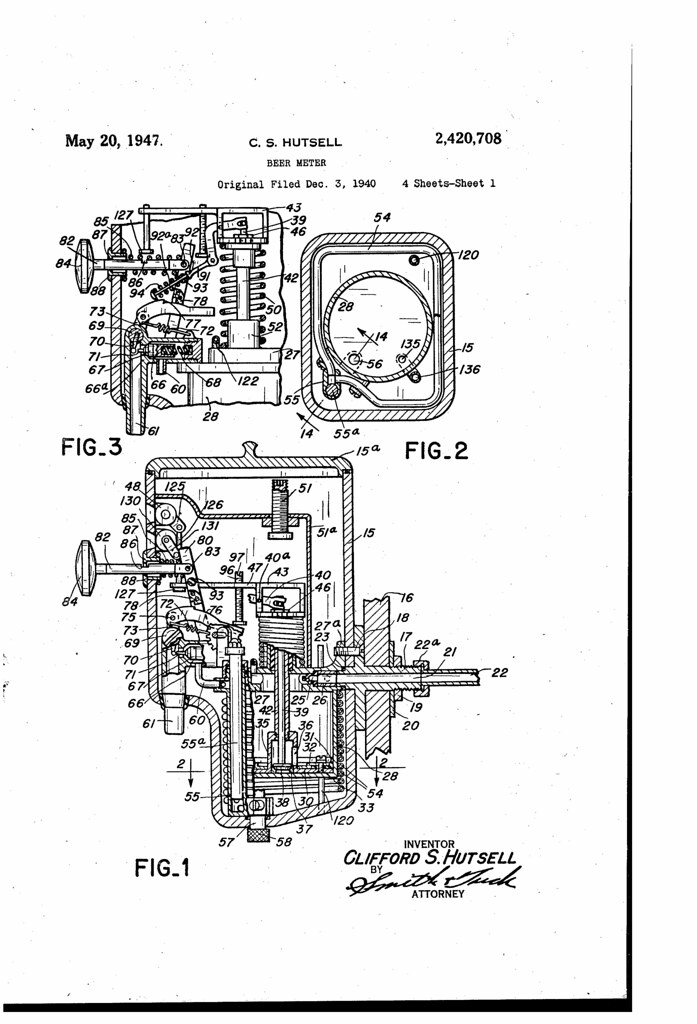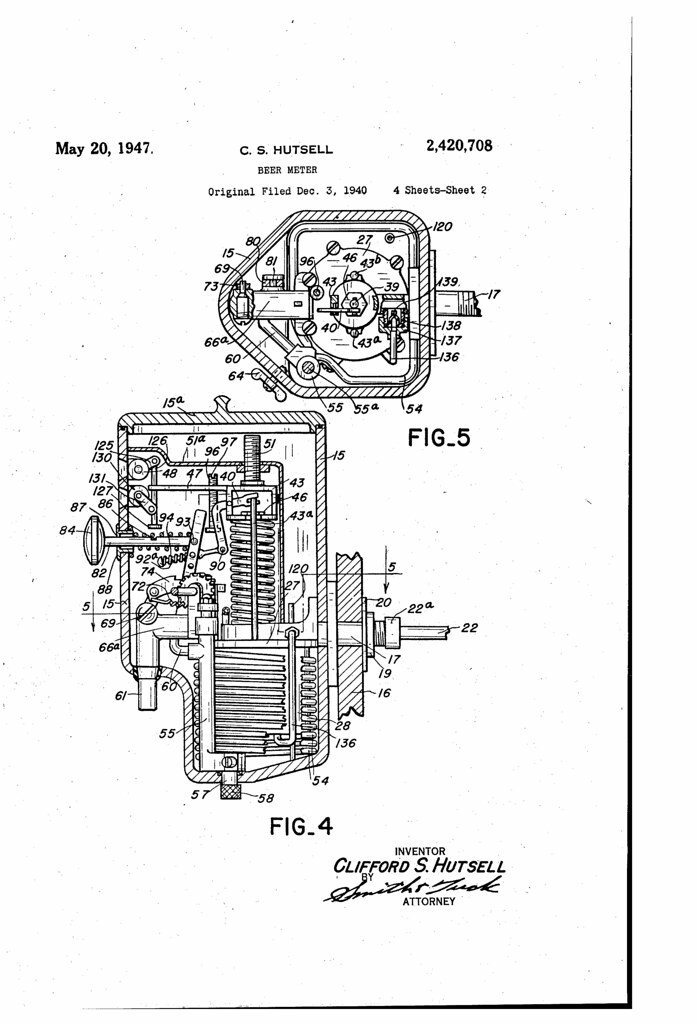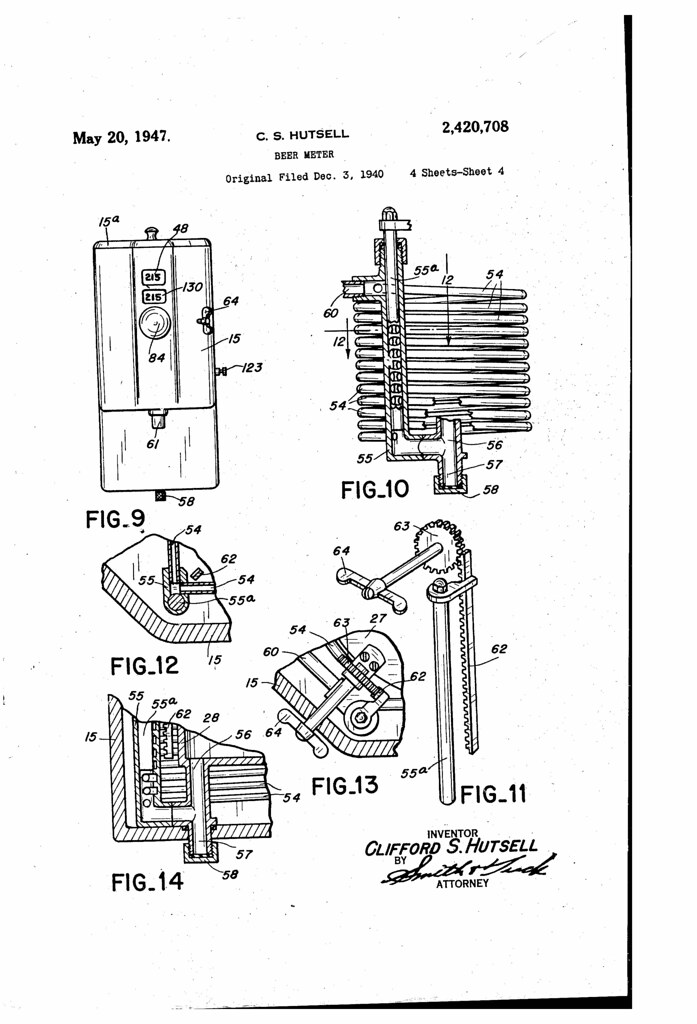
Today in 1947, US Patent 2420708 A was issued, an invention of Clifford S. Hutsell, for his “Beer Meter.” There’s no Abstract, though it’s described this way in the application:
To carry out the principles of my invention, the liquid is passed through a cooling coil which is immersed in some suitable cooling medium, the length of such cell can be varied so that the beer or other liquid can be passed through one loop or many loops of the coil; in this way the beer is brought under constriction in which its velocity is dissipated by frictional losses without the liquid itself being agitated. The liquid is then led through a discharge opening from which it may be drawn into a glass or other receptacle. This whole dispensing action is controlled, except for the adjustment of the length of coil used, by a single operating lever. My device will control the delivery of beer so that its included gas will be properly handled. The volume of the liquid is accurately measured. Each portion dispensed is accurately counted. The control and serving of beer on draught has always presented a difficult problem due to the beers susceptibility to the influence of three ever-present, variable factors; pressure, balance. Beer in its making is charged with carbon dioxide, the retention of such charge is essential to maintain its quality. When the beer is quiescent, at a sufficiently low temperature, the carbon dioxide is inert. This temperature is below the desirable serving temperatures and as the temperature is raised for serving there is a area sufficiently small to form a restriction to the temperature and agitation or tendency to discharge the carbon dioxide from the beer. To offset this tendency to dissipate its included gas and also to raise the beer to the discharge faucet, gas or air pressure is applied to the beer in the keg. The amount of pressure necessary to hold the carbon dioxide charge in the beer is in direct proportion to the tempera considerable degree, destroys the essential quality of the beer and in addition frequently causes excessive foaming at the faucet and a consequent wastage of beer.
A certain degree of refrigeration together with some form of constriction between the beer keg and the discharge tap would effect adequate control of the beer if the composition and condition of the beer were constant. However, no constant amount of restriction of the line is equally effective at all times because the beer may vary in its gaseous content, in its temperature, or it may have been recently agitated.




